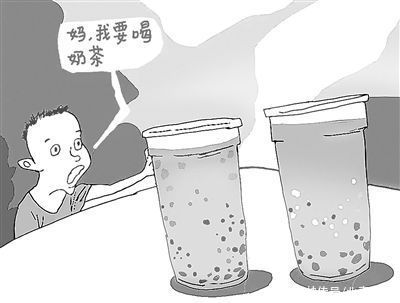
Zhang Tao
Tongtong, a 14-year-old who is still in junior high school, has recently become a “little candy man”. Tongtong’s mother took the child to the hospital and found that Tongtong’s various physical indicators showed that he was a type 2 diabetes patient. For a long time, diseases such as diabetes, high blood pressure and cerebral apoplexy have been regarded as “senile diseases”. However, a recent investigation by a reporter from Xinhua News Agency found that some young people in their twenties, thirties and even teens are also suffering from “senile diseases”.
In the past, elderly patients were the majority of patients with diabetes, hypertension, and stroke, and now the diagnosed patients are getting younger and younger. The latest epidemiological survey shows that the current incidence of childhood diabetes in China is 6/100,000, and the annual incidence is increasing by more than 14%. In January 2019, the first “White Paper on Cardiovascular and Cerebrovascular Health in China” led by the National Cardiovascular and Cerebrovascular Disease Alliance pointed out that the proportion of people aged 20 to 29 with disease/high risk has reached 15.3%. The data of the National Stroke High Risk Population Screening and Intervention Project from 2012 to 2016 showed that the age group of 40 to 64 years old accounted for more than 66% of the first onset age.
There are many reasons for the rejuvenation of “senile disease”. The first is poor diet and living habits. Many young people like to overeat and eat a lot of high-calorie and high-fat foods. At the same time, they lack the necessary exercise. Eating more and moving less can easily cause fat accumulation and increase the burden on body tissues. Followed by excessive sugar in food and beverages. The comparison test of pearl milk tea carried out by Shenzhen Quality and Consumption Research Institute shows that half of the 10 types of pearl milk tea belong to high-sugar beverages, of which the total sugar content is up to 9.30g/100g. quantity. In addition, the awareness of physical examination is poor. Many young people often think that they are young and in good health, and seldom take the initiative to go to the hospital for physical examination, thus missing the opportunity of “early detection and early treatment”.
Health is an inevitable requirement to promote the all-round development of human beings and the basic condition of economic and social development. The rejuvenation of “senile diseases” not only brings pain to the parties involved, but also directly affects their normal work and life, and also shakes the cornerstone of national development. In this regard, the whole society must make efforts from various parties to jointly contain it.
First, strengthen the popularization of health knowledge. According to the monitoring of the National Health and Health Commission, the health literacy level of Chinese residents will reach 25.40% in 2021, an increase of 2.25 percentage points over 2020, but there is a certain distance from the health needs of the masses. Relevant departments should increase the propaganda of reasonable diet and scientific nutrition, promote the popularization of national fitness activities, so that the majority of young people can master basic knowledge of healthy nutrition and develop a healthy and civilized lifestyle, so as to do a good job in their own health management and improve disease prevention. Ability.
Second, improve the national food standards. At present, some food operators use a lot of creamer, saccharin and sodium cyclamate in order to pursue taste and reduce costs. Take milk tea, which is loved by many young people as an example, because the national standard has not yet been issued, resulting in uneven product quality. Many milk teas on the market are just milk-flavored and tea-flavored sugar-sweetened beverages, which are high-sugar, high-calorie, low-nutrient “junk food”. Last year, the first group standard for ready-made milk tea in Fujian Province was issued, which stipulated the requirements for raw and auxiliary materials, food additives and food nutrition fortifiers of ready-made milk tea. Relevant departments should also formulate corresponding national standards for hot-selling foods such as milk tea as soon as possible to ensure food safety.
Third, raise public awareness of physical examination. Health check-ups can detect risk factors of diseases in time, and prompt sub-health conditions and early diseases, which is helpful for early detection and early treatment of diseases. For example, in “pre-diabetes”, a routine blood test can detect the phenomenon of elevated blood sugar and control it in time to avoid the development of diabetes. Relevant departments should raise public awareness of health check-ups through publicity and guidance. When conditions are ripe, check-ups may be included in the scope of medical insurance reimbursement to further improve the level of public health services.
Cartoon/Chen Bin